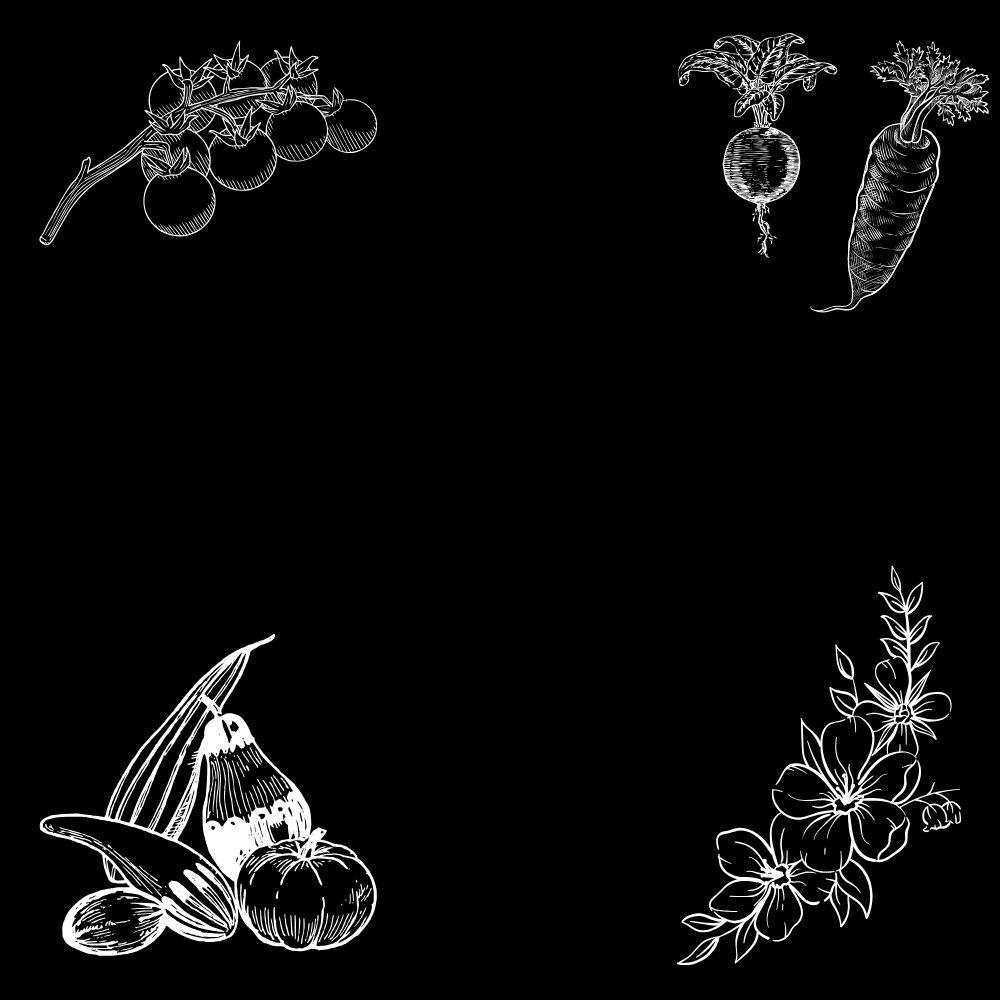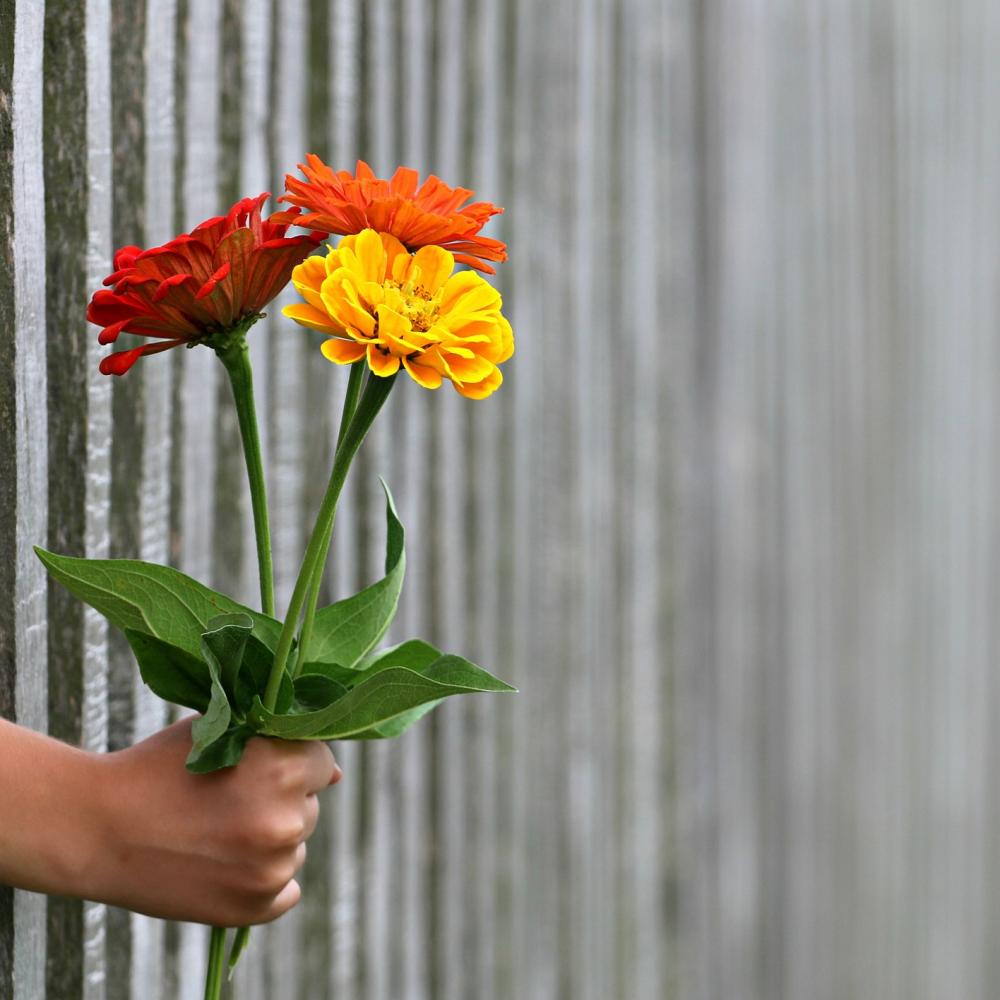
December Allotment Jobs
Tips
- Treat and clean tools
- Check for vermin in outbuildings and sheds
- Harvest crops
What to grow in December
- Winter Salad Leaves
- Garlic
- Dormant Bareroot Fruit Trees
- Broad Beans
- Herbs for indoors
December might be a quieter month on the allotment, but there’s still plenty to do and enjoy. With the ground often frozen, it's not ideal for sowing, but it’s a great time to tidy and plan for the season ahead.
Even though the growing season is slowing down, there’s still something rewarding about making the most of your plot in December. A few hardy crops might still be going, but it’s also a time to enjoy the fruits of earlier work, whether that’s digging up the last of your root veg, gathering leeks for a hearty soup, or turning stored produce into chutneys and jams.
Rather than focusing on what can’t be done, December is a chance to slow the pace and set the tone for the year to come. It’s a good time to reflect on what worked this year, tidy the plot, and make a start on planning next season’s crops.
What’s Possible in December – Allotment Overview
With temperatures between 2°C and 7°C and less than 8 hours of sunlight per day, it can be difficult to find vegetables to grow outdoors in December.
There are less direct sowing opportunities in December, but if the soil isn’t frozen, you can still plant dormant bare-root fruit trees and garlic. These hardy staples don’t mind the cold and will grow slowly over winter, ready when spring returns.
However, there are a fair amount of vegetables you can still sow or plant indoors, or in a greenhouse, particularly if it is heated. It’s important to ensure there is sufficient ventilation and enough heat and light.
Now’s also a great time to turn your attention to general plot care. Turning the compost heap helps it stay active through winter, but it’s worth covering it too, to stop nutrients from being washed away by heavy rain. It’s also important to keep your brassicas netted and to remove any outer leaves that have turned yellow to prevent any disease spreading. If you're looking to propagate, December is the perfect time to divide crowns such as rhubarb, and take hardwood cuttings from fruit bushes. A fresh, dry day may also be a good opportunity to do any maintenance work, clean up tools and equipment and clean out the shed and greenhouse.
Before temperatures drop further, make sure to harvest any remaining crops that won’t tolerate a hard frost. Overwintering plants should now be properly protected, whether with fleece, cloches, or by moving them into a polytunnel or greenhouse. Spending time outdoors, even briefly, has its own rewards. Exposure to natural light can help lift your mood, regulate your sleep, and ease the winter blues, all while keeping your plot in good condition.
So instead of wondering what to plant in December, think of this month as a chance to reset, recharge, and prepare. There’s still plenty to do and every small job now lays the groundwork for a smoother, more productive season ahead.
December Allotment Jobs Checklist
Many allotment growers find December to be one of the least productive months, with nothing growing or blooming anywhere. But the last month of the year can be spent protecting, planning and prepping for the next year’s growing season.
If you are looking for things to do and plants to grow in December, read ahead:
Plant Onion and Garlic If The Soil Isn’t Frozen
The best plants to plant in December include garlic and onions. Garlic is typically planted from October through to mid-December, while over-wintering onion sets can go in anytime between November and early winter.
Getting them in as early as possible gives them the best chance to establish before hard frosts set in, especially in colder parts of the country. If you’re planting late, choose a sheltered spot and keep an eye on soil conditions.
If you’ve planted overwintering garlic and onion, ensure the ground isn’t frozen or waterlogged; regularly weed the plants and provide protection using horticultural fleece or a cloche. You can also sow them in raised beds or containers for better soil management.
Harvest Sprouts, Kale, Leeks and Parsnips
Instead of wondering what vegetables to grow in December, you’ll have several crops that are ready to harvest. Vegetables such as brussels sprouts, kale, leeks, and parsnips benefit from a day or two of frost, as it improves their flavour profile dramatically, making them sweeter.
Most of these crops are overwintering and can be harvested as needed. When leaving them in the ground, use a cloche to protect them from extreme cold or pests such as pigeons, and mulch to aid heat retention.
Mulch Beds to Protect Soil
Mulching regulates soil temperature and water retention quality while also inhibiting weed growth. When planning what to sow in December, remember to stock up on mulch. Some common organic mulches include shredded or chipped bark, pine needles, grass clippings, newspaper, shredded leaves, and straw.
Mulch helps prevent soil erosion, reduces root damage by protecting them from the freeze-thaw cycle, builds better soil structure, retains nutrients and prevents weeds.
Insulate Pots and Containers
If you plan to sow your overwintering crops in pots and containers, you need to think about how you’re going to insulate them and help retain heat. While container-grown plants are less likely to be impacted by cold and frost, they are not completely immune.
If possible, move your containers and pots indoors or in a greenhouse and use glazed pots over unglazed terracotta pots. Remember to drain the compost, as wet compost damages the pots and the plant roots. You can also insulate pots and containers with bubble wrap or plastic bags filled with straw.
Prune Apple and Pear Trees
Apple and pear trees are usually dormant between November and early March, making December the right time for winter pruning. Carefully prune about 10-20% of the canopy to get an open crown, which helps you get better quality fruit and better disease resistance when the tree is in bloom. Make sure you prune on frost-free days, or you may end up killing the plant.
Clean Tools, Pots and Greenhouse Glass
December is the best month for general maintenance because it is typically dormant, and your tools and greenhouse are rarely used. Giving them a thorough cleaning will help to remove fungal spores, pests, and bacteria that may be dormant but become active as the days warm up.
Regular cleaning will also keep your tools in top condition, helping you during the busy growing season by extending the life of your equipment. Cleaning greenhouse glasses in December will increase light levels by 25%, promoting healthier plant growth. Cleaning the pots and seed trays removes dust, dirt and pest eggs.
December Calendar for Allotment Growers
December 1st-10th: Mulch empty beds, cover soil
December 11th-20th: Prune fruit trees, protect containers
December 21st-31st: Plan crop rotations, order seed catalogues
What to Sow Now vs What to Plant Now in December
If you’re wondering what to sow in December, don’t be discouraged, there’s still plenty you can get started indoors.
A bright windowsill, heated propagator, or grow light can give you just enough warmth and daylight to start seeds in trays. Sowing now means you’ll have a steady supply of fresh herbs and greens through winter and a head start on early crops for spring.
Here are some of the best things to sow indoors in December:
- Microgreens like mustard, cress, pea shoots, coriander, basil, and rocket
- Sprouting seeds of alfalfa, lentils
- Herbs like basil, parsley, chives, and mint
If you have access to a greenhouse, polytunnel, conservatory or cold frame, you can try to sow the following plants:
- Salad leaves such as mizuna and winter lettuce variants
- Winter spinach, ‘Giant Winter’ or ‘Perpetual Spinach’
You can also plant plug plants or germinated seedlings outdoors only if the weather is mild and the soil is not frozen. Outdoor planting is more applicable for the southern UK, where the temperature tends to be warmer. Here are some of the best vegetables to grow in December:
- Garlic variants such as ‘Solent Wight’, ‘Carcassonne Wight’, ‘Provence Wight’
- Shallot variants such as ‘Jermor’, ‘Pikant’, ‘Golden Gourmet’
- Overwintering onion sets such as ‘Radar’, ‘Senshyu Yellow’, ‘Electric’
- Bareroot fruit bushes and trees, raspberries, gooseberries, apples, pears, plums
Remember to harden off plants before transplanting them in their final position, and use horticultural cloches and fleece at night for protection.
Growing Vegetables in Containers or Small Spaces Indoors
At Allotment Online, we understand the frustration growers feel when they hit a brick wall trying to understand what to grow in December. But just because the outdoor beds are on pause doesn’t mean you can’t keep things going. With a bit of planning, you can still grow vegetables and even some flowers indoors.
Here are some of the best plants to plant in December:
- Garlic in pots kept near walls for shelter
- Salad leaves in troughs under fleece
- Herbs indoors on sunny sills
- Microgreens in shallow trays
To answer what bulbs to plant in December, try daffodils, tulips and grape hyacinths.
Precautions for Container and Indoor Growing in December
- Raise containers off the ground to prevent waterlogging and insulate pots from frost damage
- Water sparingly and use tepid water instead of icy, cold water, as it can shock the plants
- Move your containers to the south or south-west corner to maximise the daylight. Rotate the pots on a regular basis to ensure that they receive equal amounts of light
- Do not feed plants during December, as they have very slow growth or are hibernating
- Check for signs of pests or fungal diseases
Your December Grow-Your-Own Starter Kit
The end of the year is the perfect time to prepare your allotment for next year’s growing season. To get a head start during early spring, your allotment jobs in December will play an important role. Be strategic about how you make the most of the cold and slow allotment season.
So instead of feeling stuck wondering what to sow in December, here’s everything you can do to make the most of your plot this month:
- Look through seed catalogues and plan for your spring-summer growing season
- Protect your overwintering crops and containers using cloches, fleeces and bubble wrap
- Sharpen your tools, clean and disinfect your tools in readiness for the spring harvest
- Plant any overwintering variety of crops
- Get a good supply of mulch, which acts as a soil cover
- Clean the shed, storage cabins and greenhouse
- Add compost to dormant beds
- Track the winter sun to maximise growth during this period
- Plan for crop rotation and companion planting for next year
Common Problems & How to Avoid Them
December is a quiet time on the allotment, but not a problem-free one. However, through our combined expertise, we’ve come up with solutions for all the challenges you may face during this month:
Frost
Frost and cold damage are the most common problems you face during December. Keeping your pots insulated, indoors or undercover in a greenhouse, can help you avert frost damage. Mulching the soil will also help regulate the soil temperature.
Waterlogging
Heavy rain is common during December, which can lead to waterlogging. Also, improper drainage due to frozen soil further deteriorates the roots of overwintering crops. Raised beds or keeping containers on bricks will help you avoid this common winter-growing problem.
Wind Damage
Wind speeds increase this month, and they can topple and damage plants. To minimise damage, keep plants indoors or sheltered against a wall.
Winter Pests
Common winter pests include rodents, slugs, and snails, as well as deer and rabbits. Other common pests and diseases to look out for include aphids, cabbage whitefly, and allium leaf miner. Clean up your allotment, provide shade, and protect young plants with horticulture fleece or a cloche.
Tools & Techniques for December Success
No growing, harvesting or maintenance season on the allotment is successful without access to proper tools and techniques. Here is everything you need to keep handy for allotment jobs in December:
- Horticulture fleece and cloches
- Mulch
- Sharp secateurs
- Gloves and winter boots
- Raincoats
- Pruning shears
- Wheelbarrow
- Cleaning tools like soap, water and a washcloth
- Polytunnels
Start Your Allotment Growing Journey and Share Your Experience with the Community
Allotment growing can be an enjoyable experience even in the traditionally slow months. At Allotment Online, we always encourage our growers by sharing our knowledge and tips about growing vegetables, fruits, herbs and nuts.
Do you have stories and advice to share with other growers? Share your stories, photos and advice with us in our comments and socials.
Our website offers a variety of valuable tips and strategies for growers of different experience levels. If you are excited to start on your allotment journey, you can check our directory for the nearest allotment association near you.




